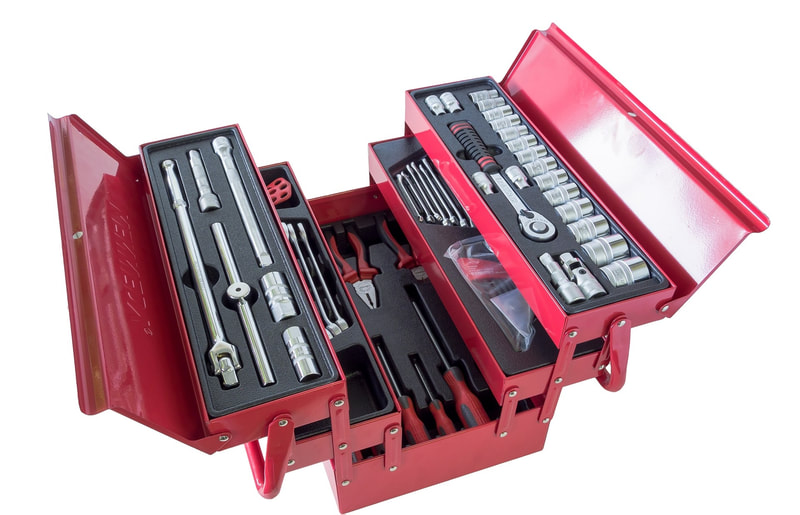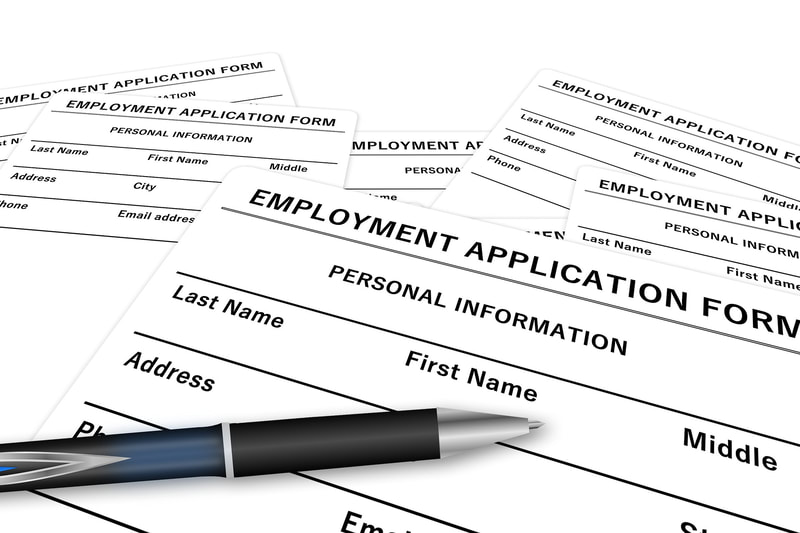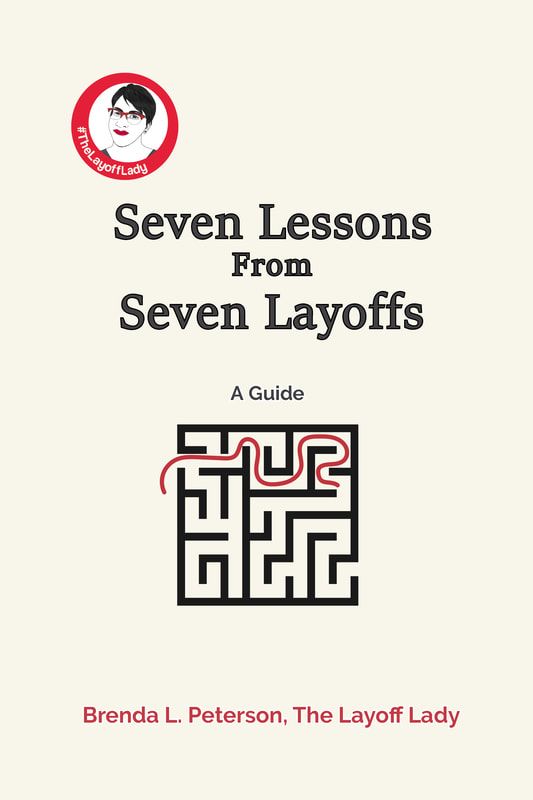|
By Brenda L. Peterson, The Layoff Lady You Have A Job Offer!Finally having a job offer after your post-layoff job search is a call for celebration. Now, you can breathe a sigh of relief and start to build your new post-career transition normal. While you may want to shout from the rooftops that you've finally landed and start celebrating, I suggest you play it cool for a couple more weeks. In most cases, accepting a job offer will lead to you starting that job just as planned. On rare occasion, something happens and that job offer falls through. Just in case, I suggest taking a few interim steps between the time you accept your job offer and the day you start your new role. How Often Are Job Offers Rescinded?In my long history of layoffs and finding my next job, I have had a job offer fall through exactly once. That means that through seven layoffs, I have had to revise my plan one whole time. Job offers can be rescinded for a number of reasons. For example, I have heard more about job offers being rescinded early in the pandemic as companies were realigning staff and when companies have been going through financial hardships. It might also be a case wehre funding for a role seemed certain, and then did not come through. In yet other cases, between the time the offer was accepted and the new employee's start date, someoen in teh organization could have just decided they want to hire someone else, not fill that role at all, or put the role on hold. In short, you can't necessarily predict when a job offer will evaporate. LIke with any job, you can look for red flags. My Rescinded Job Offer ExperienceAt the end of February, I accepted an L&D Manager role where I would build the training function from the ground up in a fast-paced startup environment. I was very excited about the opportunity, and happy that my job search--which was then clocking in at about 5 months--would be over soon. After a disjointed, a little all over the place hiring process, and an offer that took a couple of weeks to come to fruition as promised, I happily accepted and had a start date of mid-March. Soon, I did my "hooray I got a job--more details later" on LinkedIn. I didn't mention the company's name at this time since I had not yet started. I learned that lesson after announcing a job that I had accepted and not yet started--and later learned that the company had not yet notified internal candidates that they hired someone external. I was excited to have a two week gap between when I accepted the job offer and my start date. A week before my start date, I got a call from the recruiter for the role telling me that there would be a delay in my start date--and he wasn't sure how long. A few days later, I talked with the hiring manager and learned more. They were going to hold off on my start date until numbers had come in from the first quarter. She assured me there were no real concerns that I would start, but it was more when. I asked if this role was really going to happen, and I got sufficient assurances that the job would, indeed, start within a month or two at the latest. She would keep me posted on updates. The longer I waited, and the fewer updates I heard, the less confident I was the job would happen. Of course, I'd already announced that I had a new role and taken y LinkedIn profile out of job search mode, so I lost a couple of months of job search time waiting for a start date to materialize. The assurances became less frequent, and less convincing, until I got a call from the recruiter with apologies because the role was not actually happening. ...and now I had lost 2 months of job searching time and had to restrategize and restart my search. A New PlanEven though having a job offer rescinded is not a regular occurance, it is still a risk worth thinking through. Just like we buy car insurance just in case we're involved in an accident, I realized I needed to mitigate my risk of being left without a job should a job offer ever fall through again again. Reccommended Next Steps After Accepting an OfferRemember, in most cases, accepting a job will lead to you starting to work for that company shortly thereafter. Even so, remember to act in your own best interest just in case the role does not pan out. Here are suggestions for you to consider:
Learn More
0 Comments
By Brenda L. Peterson, The Layoff Lady Your Target JobAs you begin your job search, you need to identify key characteristics of your target job. To begin, make sure you do a little soul-searching and have a clear picture of what you want from your next role. For guidance on how to go about that process, check out my article entitled, "Career Planning: Figuring Out What You Want To Be Next." Here are a few of the main pieces of information that will help you move forward:
About Your What I Want StatementNow, let’s figure out how to take that information and make it into a clear statement outlining key components of what you want. Remember, the purpose of this statement is to help you clearly communicate what you are looking for in your next work opportunity. The more you talk with people about what you want, the clearer the details of what you are looking for will become for you. Your What I Want Statement: Job TitleIf you are targeting a specific job title, your What I Want statement might look like this:
Each of these examples highlights a job title, type of organization, and even the specific skills each person would like to use in their new job. Your What I Want Statement: Open To OptionsIf you are open to multiple roles within different types of organizations, you will write your statement differently. For one, start with the soul searching you did and pinpointing key characteristics of what you want in your next job. Review your list, and prioritize which factors are the most important to you. It could be the type of company you’ll work for, the geographic area, work arrangements, or specific skills that you’ll use more. Focus your statement on the aspects that are most important to you. Here are a couple of examples that I have used in previous job searches: Earlier pandemic, I used the following What I Want statement:
For my most recent job search, I used the following What I Want statement:
Overall, since I wasn't focused solely on one job title, I prioritized what mattered to me and went from there. Notice that I start with specifying the field, and the work arrangements that were most important to me. Then, I reviewed a few key skills I had that I wanted to use, and in one case talked mroe about the employer. Since the goal with these statements is to help communicate what you want, this is a good way to narrow it down so people are better able to help you in your job search. Using Your What I Want StatementWriting a clear and concise What I Want statement can help you as you review job openings you encounter and empower you to prioritize your job applications to those that most closely align with your job search goals. You can also include a version of this statement in the following contexts:
Learn More
By Brenda L. Peterson, The Layoff Lady I Found a Job!After 9 months of career transition, I am gainfully employed again! I'm excited to be working in an amazing organizational development role. Each layoff and subsequent job search brings its own challenges. Take a look at my lessons learned from this time around. New Challenges
My Post-Layoff Transitions: DurationPeople often ask how long a career transition lasts. To give a partial answer to that question, here is my unscientific, skewed-sample-size data on how long each of my periods of post-layoff career transition have lasted. The time listed starts with my last day of work with my previous employer (aka "Layoff Day") and ends with my first workday in a new role:
Overall, my average time in career transition is 128 days (just over 4 months). Layoff #7 was the longest one I've had so far, and 3 months longer than my previous record. Career Transition Duration: Contributing FactorsThere are a few key factors that made this period of career transition longer than after my previous layoffs:
The Numbers: Job Applications and InterviewsGiven that my previous employer was starting to make organizational changes, including a few rounds of "quiet layoffs," I started to keep an eye out for a new job starting in July of 2022, which I've included in this summary:
The Insights: More Opportunities, Fewer InterviewsOne challenge during this job search is the newly added focus on work location--specifically the following labels: onsite, hybrid, and remote. Part of why I felt comfortable relocating from Minneapolis, MN to Omaha, NE in mid-2022 was the prevalence of remote work. I also realized that the definition of "remote" for companies can vary widely. As I reflect on my job search, I wonder how many positions I applied for with companies who were not interested in or able to hire someone who lives in my current state of residence. While there are, indeed, many remote jobs available in my chosen field of learning and development, I discovered first-hand that companies and job search sites are not necessarily aligned on what each of these words means. Remote jobs mean more applications for me and way more competition:
The Numbers: Working With RecruitersRemember, LinkedIn is your billboard to the world. Be sure to make your profile a good representation of what you bring to the table as a job candidate. Have a strong headline that includes the job title(s) that interest you and a few key skills. Have your professional summary in the About section, your work experiences, and at least a couple of sentences about each of your previous jobs. This is what recruiters will check after you apply. This is what may come up in a recruiter's search when they are sourcing candidates. Make this count. Here are the responses from recruiters this time around:
My Re-Launched Job SearchIn April, when I re-launched my job search, I changed my overall approach.
At this point in my job search, I had also built stronger relationships with my colleagues in my Omaha-area professional development groups. When I first launched my job search in the fall, I had only been in the area for 2 months. Between then and April, I had met more people in person, talked with them in meetings, presented to groups, and helped a few of them solve business problems. I'm sure getting to know me better and working alongside me helped them to feel more comfortable speaking to my skillset and recommending me as my job search progressed. My Overall Insights
Learn More
By Brenda L. Peterson, The Layoff Lady Job Search ChallengesWhen you're looking for a new role, there is a lot to do to help move your job search along. Getting your resume where you want it to be, tracking application progress, and scheduling meetings with others can take a lot of time and effort. Here are three excellent tools to help manage, streamline, and optimize your job search. The tools mentioned here all have a robust set of features in the free version with the option to pay for additional functionality. I'll focus on currently available features included as a part of the free version. Links for each tool are included in the "Learn More" section. Teal: Tracking Applications and Resume UpdatingTeal is helpful in multiple aspects of my job search. Teal enables me to save jobs of interest, evaluate highlighted qualifications, and track my application progress with roles. Here is how I use Teal in my job search:
Teal continues to evolve and add new features--and offers much more than I currently use. This is the cornerstone of how I track my current job-searching activities. Calendly: Managing Meeting SchedulingMeeting with people during your job search can be very valuable. Whether you're meeting to learn more about a company, find out what tasks one does in a given line of work, or catch up with a former corworker, streamlining your scheduling process is a big timesaver. Enter Calendly. You can create a Calendly account, add your personal branding, and add language to describe yourself and what you want. You can also link Calendly with your Google Calendar and your webinar account (like Zoom or Google Meetup). Without paying an additional cost, you can select one free meeting type. I use the half-hour meeting, and I call mine "Virtual Coffee." It’s also helpful because our meeting can last as long as it needs to last (beyond that specified half hour) with no issues. Within Calendly, you can set up your available days and times, choose how far out in the future people can schedule a meeting with you, and even decide how many meetings you are open to having on a given day. In addition, you can select the mode of the meeting (phone or online) and include a few questions to help clarify the goals of the meeting. Here is how I use Calendly in my job search:
Calendly automates key components of scheduling. With a minor setup on the front end, I can spend less time finding a meeting time and more time on other valuable job searching and networking tasks. Grammarly: Clarifying Your CommunicationsYour job search is all about communicating your value to hiring managers and recruiters. Ensuring your writing is clear and correct is essential to demonstrate your professional value and credibility. Enter my new best friend, Grammarly. This spelling and grammar checker goes above and beyond what you may already have in word processing or email platforms. I run any communication I will put in front of job-searching influencers through Grammarly. Here is how I use Calendly in my job search:
Even this English major appreciates having Grammarly as a second set of eyes (or, in this case, AI) to polish my writing. Learn MoreBy Brenda L. Peterson, The Layoff Lady Onsite, Remote, and Hybrid Work ImplicationsOne challenge during my most recent job search has been the newly added focus on work location. Specifically, the following labels have become more standard on job listings: onsite, hybrid, and remote. While there are, indeed, many remote jobs available, I discovered first-hand that companies and job search sites are not necessarily aligned on what remote, hybrid, and onsite work arrangements mean. Let's dig a little deeper. Remote Job ClarificationsOverall, a "remote" job could mean one or more of the following are true:
Onsite, Remote, and Hybrid Roles in PracticeRegardless of the label, jobs may work differently in practice. Here are a few of the many possible scenarios:
Navigating Job Listings for Remote RolesAs a job seeker, knowing that companies may vary on how they list details in their job descriptions, here are a few strategies for navigating job listings:
Remote Work Implications: Locations and PayThere are also a few other implications of remote work to keep in mind:
Strategies for Remote Work Salary ConversationsGiven these variations on how salaries work for remote roles, be sure to think through your financial requirements and how you will address questions about your desired salary:
Learn MoreBy Brenda L. Peterson, The Layoff Lady Post-Layoff ChallengesWhen your “day job ends”, many things in your financial life change. For one, what is for many people their core source of income, ends. This often prompts a quick shift to a short-term survival mindset that will last from the layoff event until the first paycheck from that new job arrives. Let's talk about how to manage your healthcare during this time. Note that I’ll outline options first, and then you can review all of the links at the end of this article for additional information. Brace yourself—there is a lot going on here. Disclaimer: (You know there has to be one of these now that we're talking about topics like personal finances and health insurance.) While I know quite a bit based on my previous work experience supporting financial coaches, my own research, and my personal life experiences, I do not currently hold a license or certification to give financial advice. The information provided here is educational information provided as guidance. I hope you glean value from my lessons learned. Feel free to take my recommendations or not—but whatever you do, double-check my facts (and everyone's facts, for that matter). This is your life, and you will care more about your finances and health care than anyone else does. With that, read on. Healthcare Coverage While EmployedIn the United States, where health insurance for many people is part of an employer-provided benefits package, thinking through the health insurance implications of a job change is critically important. While working, you have limited health care coverage options through your employer. You make your selection when you first start, and after that, once a year. In most cases, your employer pays for part of it, facilitates the payment for your health care coverage, and even allows you to set up and use a Health Savings Account (HSA) as a separate benefit. Healthcare Coverage Options After a LayoffAfter you are laid off, your former employer will let you know when your benefits end. It may be as soon as your separation date, the end of the calendar month, or some other date altogether depending on your organization. If you have the time and ability to do so, it may be a good idea to fit in any doctor's appointments you have been putting off while you still have coverage. Once your employer-sponsored coverage ends, there are many options for healthcare coverage. You'll also need to take steps to enroll in whatever coverage you choose. Most of these options have an associated monthly premium, and some are more cost-effective than others. Here are a few possibilities for your consideration. Your Severance Package and Continued BenefitsIf you do receive a sewerage package, you may also receive continued healthcare coverage for a specified period of time. You may get health care coverage included for a bit. This could be the company paying for the benefits you had before, or an amount of money that is earmarked to pay for healthcare coverage. These are two very different propositions. If the company continues to pay for your health benefits, your coverage will work as before with your same coverage levels and networks. However, if you receive money to pay for health care coverage, you will need to decide what to purchase, enroll, then pay for it as billed. COBRA Continuation CoverageCOBRA stands for Consolidated Omnibus Budget Reconciliation Act. In short, this provision allows former employees to pay the total cost of their formerly work-sponsored health insurance on their own. If you choose this option, you can keep this coverage for up to 18 or 36 months. As part of your layoff paperwork, your now former company will send you information about the logistics and cost of keeping this coverage and let you know your deadline for signing up (which is typically 60 days). The good news? You can keep your same coverage. The bad news? The cost may knock you back. Now, you'll pay the total price for your coverage instead of your employer helping offset the cause. For example, while working, you may have spent $500 a month for your family’s healthcare coverage, and with COBRA, you will now likely pay thousands of dollars a month for that same coverage. A Dependent on Someone Else's Employer PlanDepending on your age and personal situation, you may have the option to be added to someone else’s employer-sponsored healthcare coverage. Here are two common scenarios:
In general, if your former employer’s plan covered you, your family member's plan will allow you to enroll in their plan, even mid-year. Be sure to check with your family member's employer to see if being added to their plan is a good option for you. Remember, if you are added to your family member's health insurance plan, the additional costs for whoever is footing the bill can vary from “no big deal” to “holy crap, that’s an extra [whole lotta money] a paycheck!” Healthcare.gov: The MarketplaceSince the Affordable Care Act (ACA—also nicknamed “Obamacare”), additional healthcare coverage options have been available outside employer-sponsored coverage. To find out what health insurance options are available, your eligibility, and any amount of help (in the form of a subsidy) you might qualify for, check out Healthcare.gov, also referred to as “The Marketplace.” Alternatively, some states have their own healthcare-specific website, like MNsure.gov in Minnesota. Regardless of if your state uses the national site or their own, this is the go-to place to find out about possible healthcare options that comply with ACA standards, meaning that they include a base level of coverage (like preventative health screenings, emergency services, pregnancy, etc.). Many of these plans are High Deductible Health Plans (HDHP), and the higher the deductible, the lower your monthly premium, but the higher the possible out-of-pocket expense you will have. As with other high deductible plans, you can save money in a separate Health Savings Account (HSA) to help cover those expenses. However, Healthcare.gov does not have the option to help you set up an HSA account, so you’ll have to seek that out elsewhere if you are interested in setting that up. One significant benefit of looking here is the possibility of getting a subsidy. A subsidy will help offset your healthcare cost and is usually applied before any premium you would need to pay every month. Typically, subsidies are calculated based on your projected income for the year, depend on how much money your household is bringing in, and may vary by state. You would need to enroll in an ACA plan within 60 days of being laid off. Overall, Healthcare.gov can be a lot to juggle—but they do have help available in the form of agents, brokers, or assisters. Short Term Health InsuranceShort Term health insurance is just that—lower-cost insurance intended to help you bridge the gap between employer-sponsored coverage. Typically, these don’t have preventative benefits (like annual physicals or flu shots covered), but they are significantly less expensive. In addition, this kind of coverage ensures that if something big happens, like an accident where you end up in the hospital, you won’t go broke paying for all those costs. For example, during one period of unemployment, I bought short-term health insurance coverage for my daughter (for a tumultuous month where for a moment, it looked like all of my daughter’s parental units would manage to be out of work all at once). It was under $100 and ensured she had at least some coverage as we figured out the details of her longer-term healthcare coverage. Other OptionsThere are several other options to help pay for healthcare costs varying from good ideas to decidedly bad ones. For example, you could buy a private health insurance plan, take part in Medicaid/Medical assistance based on your financial situation, explore a community health share program, visit community health centers, use telehealth, rely on Minute Clinic, use a healthcare-specific credit card, and/or use discount cards to minimize prescription costs. When it comes down to it, consider the short and long-term implications of your healthcare coverage decisions (including the possible financial hardship of having a significant medical diagnosis or expense without being insured) before choosing your course of action. Learn More
By Brenda L. Peterson, The Layoff Lady Post-Layoff ChallengesWhen your “day job" ends, many things in your financial life change. For one, what is for many people their primary source of income, ends. This often prompts a quick shift to a short-term survival mindset that will last from the layoff event until the first paycheck from that new job arrives. After you think about your overall survival budget goals and managing expenses, think about your sources of income during your career transition. Disclaimer: (You know there has to be one of these now that we're talking about topics like personal finances and health insurance.) While I know quite a bit based on my previous work experience supporting financial coaches, my own research, and my personal life experiences, I do not currently hold a license or certification to give financial advice. Therefore, the information provided here is educational information provided as guidance. I hope you can glean value from my lessons learned. Feel free to take my recommendations or not—but whatever you do, double-check my facts (and everyone's facts, for that matter). This is your life, and you will care more about your finances and health care than anyone else. With that, read on. Income While WorkingWhen you’re gainfully employed, usually a couple of times per month, you receive your paycheck. Your taxes are deducted according to what you set up. You also typically have deductions for health care costs, company-sponsored insurance benefits (life insurance, disability insurance), and company-sponsored savings (Flexible Spending Accounts, Healthcare Savings Accounts, retirement contributions). Once that company no longer employs you, your income changes significantly. Possible Money From Your Employer After LayoffWhile you won’t have the income from your job on a go-forward basis, you may have one or more of these types of money coming from that employer after your position ends. Your Last PaycheckYou will receive a payment for any hours worked for which you still need to be paid. Typically, this check will not include deductions for health insurance or any other benefits since you no longer participate in those programs. In addition, taxes will be withheld from this payment. Remaining Paid Time Off (PTO) or VacationDepending on multiple factors, you may be paid for any PTO you had accrued but had not yet taken. For example, if the company you worked for had “Unlimited” paid time off, you will not receive any vacation payout since there was no tie between accruing and taking time off. In addition, some companies have written into their company policies that they do not pay out vacation time after an employee no longer works there. However, some states require vacation payouts from previous employers. (I know this because Nebraska, my current state of residence, is one of those states.) Know that getting a payout is not guaranteed, but this is definitely something you should investigate to see if you are eligible. A Severance PackageA severance package may be a component of your layoff. Severance could include a lump sum, continuation of insurance for a period of time, and/or support services to help you transition to a new position outside of that organization. In many cases, companies do not have to provide any sort of severance. If they offer severance, it is often to help minimize the likelihood of former employees taking legal action after a layoff. It is also a way that companies help their employees financially during that difficult transition time. If you do receive a severance payment, the amount can vary wildly. It could be between a fat lot of nothing, to the equivalent of a paycheck, to 1-2 weeks of pay for each year you were with the organization, to a larger check equaling months of income. It depends on the organization, their financial position, how they want to be perceived by the media during the layoff, or any other factors. If you receive a severance payment, realize that it may be less money than you anticipated because of withholding taxes. If you are offered a severance package, realize you must sign something before receiving a payment, benefits, or any other services promised. Once you sign, any thoughts you might have about legal action regarding your employment with the organization are pretty much over. Read the agreement given to you, consider having a lawyer look it over, and ask for clarifications (and any revisions) before signing it. After that, there is typically a waiting period before you receive that money. This is big-time adulting here, so enlist help as needed. Unemployment Insurance (UI) BenefitsWhile your regularly scheduled income from your previous employer ends, in most cases, with a layoff, you will be eligible for unemployment insurance (UI) benefits. In short, apply for UI benefits. Remember--this is money that you paid into your state government while you were working. There is no shame in collecting unemployment because it is literally your money that you paid in and get to use for this purpose. UI BasicsHere are a few key details about UI payments:
Additional Factors That Impact UI Benefits PaymentsYou may also be eligible for job search support services and even programs to help you upgrade your skills. In many states, you must complete outlined “reemployment activities” to stay eligible to receive unemployment payments. For example, some states may require you to apply for a given number of jobs each week, or attend classes, or confirm you did not turn down a suitable job offer. Also know that if you will be receiving a severance payment, it will impact when you are eligible to start receiving unemployment payments. When you apply for unemployment, you will be asked to specify any payments you still expect to receive from your previous employer. Typically, if you are receiving severance that is intended to cover a set period of time, you will also not be eligible for unemployment payments during that time. Personally, I had periods when I was in a career transition where I never received an unemployment payment because I started a new job before the number of weeks specified for my severance ran out. Again, if you’re unsure on details, make that phone call to ask for clarification. Interim Paid WorkDepending on your situation, you may need to find interim work while looking for a more permanent role. For example, if the amount you receive from UI benefits needs to be increased to pay your core bills, you may need to take a job to make ends meet. This could be anything from contract work in your chosen field (that may pay pretty close to your previous full-time job) to a supplemental job that you do for a little extra income. If you have a partner, it may be a case where they take on additional paid work or help more with expenses while you are in career transition. Other OptionsThere are multiple ways to pay for your life, varying from good to decidedly bad ideas. You could do anything from using your savings, to selling unused items, to using credit cards, to acquiring additional debt, to using your home equity, to taking money out of your HSA account (and paying taxes on what you removed), to starting a Go Fund Me page, to donating plasma, or even tapping into retirement accounts (and paying a steep penalty). Be sure to consider the short and long-term implications of any of those decisions before choosing your course of action. Learn More
By Brenda L. Peterson, The Layoff Lady Post-Layoff ChangesWhen your “day job ends,” many things in your financial life change. For one, what is for many people their primary source of income, ends. This often prompts a quick shift to a short-term "survival" mindset that will last from the layoff event until the first paycheck from that new job arrives. Let's talk about your new financial goals and how to manage expenses. Disclaimer: (You know there has to be one of these now that we're talking about topics like personal finances and health insurance.) While I know quite a bit based on my previous work experience supporting financial coaches, my own research, and my personal life experiences, I do not currently hold a license or certification to give financial advice. Therefore, the information provided here is educational information provided as guidance. I hope you can glean value from my lessons learned. Feel free to take my recommendations or not—but whatever you do, double-check my facts (and everyone's facts, for that matter). This is your life, and you will care more about your finances and health care than anyone else. With that, read on. Employed Financial GoalsWhen gainfully employed, your household financial goals may look like this:
Typically, goals include living within your means and spending/saving/giving money in line with your values and financial priorities. When things are going "as normal," you probably have the capacity to think about current activities and consider what is possible in the future. Layoff Financial GoalsDuring a career transition, financial priorities shift from being proactive to focusing on the here and now. The goal is to get through the next one to six months with as few adverse effects as possible. Here are my recommendations for crucial goals to keep in mind during a period of reduced income and job transition:
While navigating post-layoff unemployment, the goal is to make it through with as few bumps and bruises as possible. Instead of trying to pay off a previous purchase or save for a goal, you will probably leave any “extra” money in your checking account just in case. Paring Down ExpensesThis is also a good time to see what expenses you can pare down in the short term to ensure that the money you do have lasts a little longer. Here are a few ideas:
Prioritizing ExpensesHere is a recommendation for prioritizing which bills you pay when money is tight:
What To Do If You Can't PayIf you can’t pay your bills, call the company and discuss how to make arrangements. Instead of just plain NOT paying a bill, make a phone call. I know this can be hard and humbling, but it is important to figure out a plan. Remember, you're not the first person to be in a position where they had an unexpected job loss and needed to figure out alternatives. It is also to the company's advantage to work with you. It's in the company's interest to help you stay on track as a customer than for them to spend the time and staffing on repossessing items or turning off and on utilities. Help them help you. Making this call also helps minimize damage to your credit score (which could even impact your ability to find work sometimes). Be sure to call right away when you start to have issues instead of waiting until you have a lot of issues. I encourage you to call when you worry abouat having a hard time making one mortgage payment instead of waiting until you are months behind. Remember, though, even if you have waited, MAKE THAT CALL! When working with a company on making payment arrangements, you may be able to defer payments, figure out a payment plan, take advantage of a company-sponsored program, or find a government-sponsored program to help you during a hard time. County, faith-based organizations, and non-profits may be able to help you, too. Whether you need help paying for gas, food, transportation, or utilities, make sure to use the available resources. Learn More
by Brenda L. Peterson, The Layoff Lady A Harsh Truth About Job SearchingJob searching is hard. One of the things that makes it particularly challenging is that you can't actually control when you will get a new job. The whole process takes as long as it takes. To make all of that waiting bearable, it's helpful to focus on the aspects of your job search you can control. Measuring SuccessMy "day job" is working in the field of learning and development. One of my goals is to make sure that the performance support initiatives I'm designing (a class, a handout, a video) actually help solve a problem in a way that can be quantified. There are two kinds of indicators to help measure success: leading indicators and lagging indicators. Lagging indicators are what we all typically want to focus on. If I'm delivering a training session for salespeople on how they can sell a given product, the lagging indicator after training would be that they sold more of the product than they did before training and that more people spent more money on that given product--ideally being able to state who did what using dollar amount or percentage of improvement. One trick is that I can’t control how salespeople use the information presented in training or that individuals want or need to purchase the product. They are also lagging indicators because those results take a bit to show up. However, this is what success is supposed to look like. Leading indicators are where it's more helpful to focus. These are the easily measurable, countable, check-off-able items that are predominantly within your control. For this example, my leading indicators of success would be that we held a training session, having a list of who attended the training session, how they performed on an assessment based on the content covered, and that they received a job aid that contained talking points on the content covered. I can control all of these things. Of course, these leading indicators don't necessarily guarantee I'll achieve my lagging indicators. Still, they show that I'm going in the right direction and help position those salespeople to achieve the sales numbers we hope to see. Job Search: Lagging IndicatorsWithin the context of my job search, here are the tangible markers of success that I want to see:
All of these are lagging indicators. They are awesome because when they happen, they are definitive, and you know you have made legitimate progress toward getting a job. The trick is that many of these things happening at all--and what the timing might look like--is out of your control. Ways to Achieve the Bigger GoalWhile I can't directly make those lagging indicators happen, I can focus on strategies to position myself for more success in those areas, including the following:
Job Search: Leading Indicators.Now, to turn those squishier ideas into leading indicators (which are specific, countable, check-off-able things I can put on a to-do list), here are items I can actually do in a given week:
Having this list of tangible actions to take keeps me on track to achieve my goal of starting a new job. Keep On Doing The Right ThingsSome weeks, you do a lot of waiting, which makes you feel like you are terrible at everything and will never work again. Other weeks, people seem to be falling all over themselves to talk with you about yet another amazing job opportunity. During those weeks, you feel like this is all easy and you can do no wrong. During those slow weeks, it's helpful to remember to keep on doing those right things. Fine-tune as needed and know that your best strategy is to keep on keeping on. Put in the work, then trust the process. Learn MoreBy Brenda L. Peterson, The Layoff Lady Don't Go It AloneLife is challenging when nothing in particular is happening. When you're going through a job change (especially one you didn't plan), it's even harder. While I'm a fan of self-reliance, I also know the value of finding people who want to support you and letting them do it. You're not weak for needing people. You are smart for planning ahead for what you will need. You Need Help Because This is HardI have been through a post-layoff job transition 7 times, and it is difficult each and every time. There is the fear that it will just never end and you'll be drifting for eternity trying to find paid work where you can pay your bills--much less in a job you want. You worry that you'll have to settle for something that may be even worse than the worst job you've ever had. You also worry that you'll run out of money and not be able to pay your bills and lose everything you own and everyone you've ever loved. While your rational mind knows this is all pretty unlikely, there will be moments when it all seems hopeless. That's where your support network comes in. No matter how resilient and downright badass you are, doing this alone makes it way harder. People Want to Help You: Make Sure to Let ThemAs an extra added bonus, people want to help you! I'm always inspired by people who come out of the woodwork to check on me, tell me about an open position, thank me for helping them once upon a time, or offer to refer me for a role. Everyone has struggled with something at one time or another, and someone has helped them. Let other people help you. Building Your TeamIt also takes a village to get you through a career transition. Relying on one person for everything is all kinds of stressful. Know that people want to help, and it's a matter of figuring out what you need, letting people know, and reaching out to people when you need it. Going through a job search is challenging even in the best of circumstances. If you're starting from a layoff (especially the part where someone else got to make a big, uninvited life decision for you) it can be even more challenging. Types of Help You NeedHere's a starter list of the types of help you may need during your job transition. More specifically, here is some of what I needed. Use this as a starting point and add details as it helps you:
Who Can HelpWhen it comes to help, I start with my inner circle--close friends and family. I'm also sure to widen my support team beyond them, too. I also move beyond that immediate group. I interact with my LinkedIn connections. I tap into online groups including job search groups, The White Box Club, and even LinkedIn groups focusing on networking or a content area (like sales enablement). I interact with in-person membership groups like ATD or the Omaha OD Network. Or I seek out non-work connections through social Meetup groups or activities. Sometimes, I just spend time in coffee shops to indirectly interact with other people. It's a matter of figuring out what you need and finding a person to help. Asking for HelpKnow, too, that there will be times when you need to straight up reach out to someone because you need help. Each person will have their areas of interest and expertise, so be sure to keep that in mind when asking for help. It's helpful to consider who you might contact for different needs. Here are a few cases where I reach out to different people to ask for help:
Learn More |

Just get laid off?
Click here for info on what to do first. Author7-time layoff survivor Brenda L. Peterson, The Layoff Lady, waxes poetic on layoffs, job transitions, & career resilience. Buy The Book!Were you recently laid off from your job and need a roadmap for what's next? Pick up a copy of my book, Seven Lessons From Seven Layoffs: A Guide!
Categories
All
Archives
April 2024
|






















